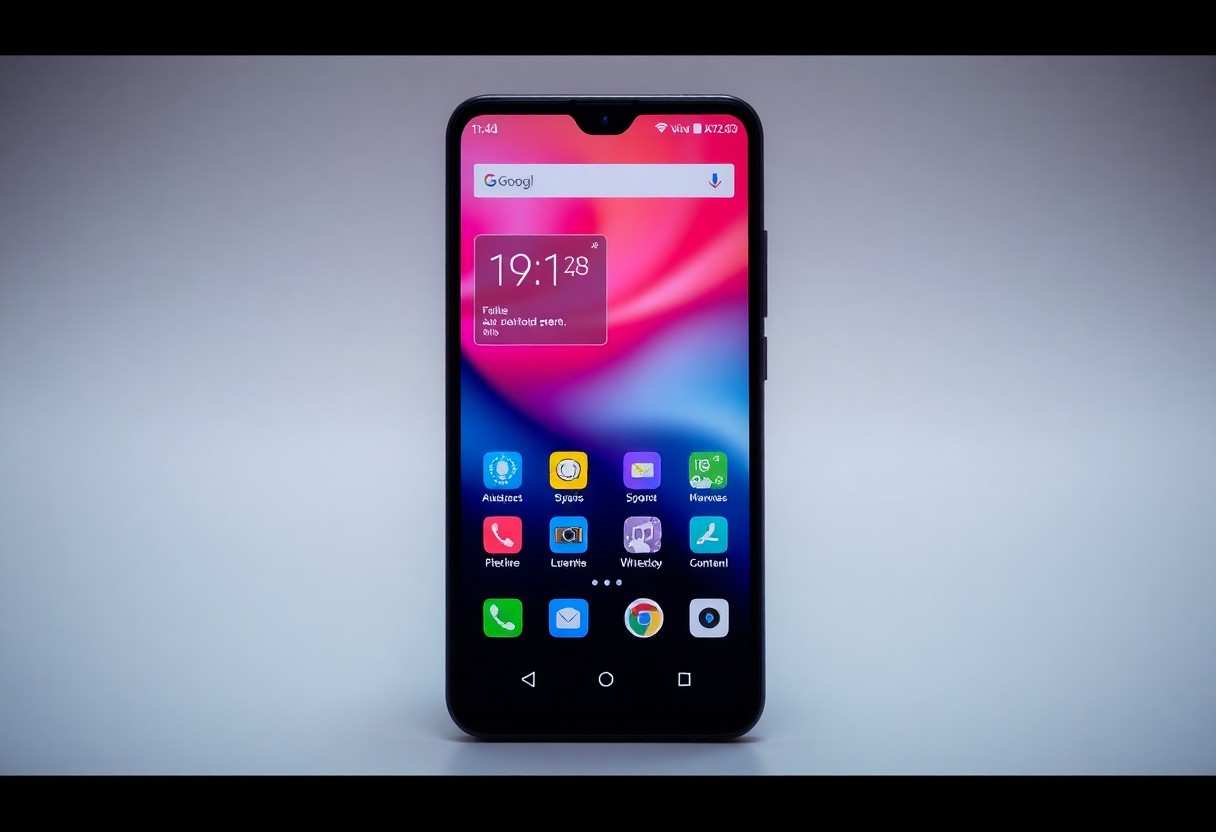iOS 26 introduces exciting features and enhancements that can significantly impact your application’s performance and user experience. To ensure your apps thrive in this new environment, you need to adopt best practices while working with the public beta. In this blog post, we’ll explore vital strategies that will help you optimize your development process, safeguard your apps against potential issues, and take full advantage of the latest iOS capabilities. By effectively preparing for iOS 26, you can position your applications for success in an evolving digital landscape.

The Changing Landscape of iOS Development
As iOS continues to evolve, the demands on developers grow increasingly complex. Adapting to new features, shifting user expectations, and the competitive market landscape require a fresh perspective on app design and functionality. With each new release, you must stay informed about upcoming technologies, tools, and best practices that will enhance your development process and improve user experience.
Key Features and Enhancements in iOS 26
The latest iOS 26 update comes packed with powerful features set to redefine the development process.
- Enhanced Swift concurrency support
- Advanced machine learning capabilities with Core ML
- Significant improvements in privacy settings
- New widgets and home screen customization options
- Dedicated APIs for augmented reality experiences
This version encourages you to integrate these innovations into your apps to remain competitive and relevant.
Implications for App Compatibility and Performance
With iOS 26, you may encounter challenges related to app compatibility and performance optimizations. Ensuring your app functions smoothly across a range of devices necessitates thorough testing and potentially substantial updates to your codebase. Adapting to the new API changes and leveraging updated frameworks will enhance responsiveness and stability, ultimately leading to a better user experience. The shift in system architecture may result in some legacy code becoming redundant, urging you to assess and modernize your app accordingly.
Incorporating best practices for app compatibility is crucial as you navigate potential issues with older devices and previous iOS versions. You should prioritize optimizing your app for the latest hardware capabilities while maintaining a fallback for older systems. This proactive approach not only prevents crashes but also allows you to leverage the performance enhancements introduced with iOS 26, leading to a smoother experience for users across various platforms.
Embracing Public Beta: Risks and Rewards
Engaging with public beta programs can offer developers valuable insights into the latest iOS features while allowing you to test your applications in real-world scenarios. However, this opportunity comes with inherent risks and challenges, such as unexpected crashes or compatibility issues that could impact your users’ experiences. Balancing these risks against the potential benefits, such as early feedback and the chance to enhance your app’s functionality, is key to successful participation in public beta testing.
Why Participate in Public Beta Testing?
Participating in public beta testing allows you to gain early access to new features and update your app in alignment with Apple’s latest changes. By proactively testing your app in the beta environment, you can identify bugs and usability issues ahead of the official release, ultimately improving user satisfaction and retention. Additionally, this engagement positions you as a forward-thinking developer who is willing to embrace innovation while providing valuable feedback to Apple.
Navigating Potential Pitfalls of Public Beta
Engaging in public beta testing can come with its share of challenges. As Apple rolls out new features, you might encounter unexpected bugs or app crashes that could negatively affect user experience. Furthermore, frequent updates during the beta phase can lead to compatibility issues if your app relies on newly introduced components. To minimize these risks, you should keep your testing environment as stable as possible and maintain a clear communication channel with your users about potential issues.
Testing your app within a beta environment means you must be prepared for constant changes that could disrupt your development cycle. For instance, the introduction of a new API might suddenly alter how certain functionalities work or lead to deprecated features that your app depends on. You may find yourself frequently addressing these changes, leading to a more intensive development process. Staying organized with version control and prioritizing feedback loops can help you efficiently navigate these hurdles. Regularly communicating with your beta users about updates and issues can also strengthen your relationship with them, turning potential pitfalls into opportunities for engagement and support.
Essential Best Practices for App Optimization
Optimizing your app for iOS 26 involves a multifaceted approach to ensure compatibility and seamless performance. Pay close attention to memory management, as recent updates could affect your app’s resource consumption. Utilize Apple’s Instruments tool to analyze CPU and memory usage, and focus on refining background operations to maintain responsiveness. Consider implementing adaptive layouts that adjust to various screen sizes and orientations, enhancing the user experience on all devices. By actively monitoring performance metrics and addressing potential bottlenecks, you’ll provide users with a smooth and enjoyable interface.
Adapting User Interfaces for iOS 26
Focusing on user interface adjustments is vital for maintaining an engaging experience. With the introduction of new design guidelines and widgets in iOS 26, you’ll need to reassess your app’s UI components. Embrace updated frameworks like SwiftUI, which streamline the process of implementing dynamic layouts that adapt to different display sizes and orientations. Leveraging these tools allows you to create a more intuitive, visually appealing design that resonates with users while aligning with Apple’s vision for modern app interfaces.
Implementing Compatibility Checks and Updates
Ensure that your app runs smoothly across all devices by integrating compatibility checks. Use versioning APIs to detect the iOS version and make adjustments to your app’s functionality accordingly. Tomorrow’s users may still be on older versions, so accommodate them without sacrificing your app’s performance. Regularly update your app to incorporate new features provided in the latest iOS version while maintaining core functionality for previous iterations. This not only improves user satisfaction but also leads to better reviews and, ultimately, a larger user base.
Implementing compatibility checks proactively addresses potential issues that arise from system updates. Insert checks within your app’s launch process to determine whether the current environment meets the necessary requirements for optimal performance. For instance, if your app relies on a specific functionality introduced in iOS 26, prompt users with an update notification should they be running an older version. This method preserves user engagement and minimizes negative experiences stemming from compatibility issues, as it ensures your app does not crash or malfunction unexpectedly on unsupported devices.
User Feedback: Your Most Valuable Resource
In app development, the input from users during the beta phase is invaluable. By actively seeking out and valuing user feedback, you can gain insights into your app’s performance, usability, and overall experience. This direct line to your audience not only helps identify bugs but can also shape the direction of future updates, making your app more intuitive and user-friendly in the long run.
Collecting and Analyzing Beta User Feedback
Gathering feedback from beta testers can be achieved through various methods including in-app surveys, forums, and social media channels. Consider implementing usability testing sessions to directly observe how users interact with your app and identify pain points. Analyzing this data will reveal common themes and areas for improvement, ensuring that you prioritize features that truly matter to your users.
Integrating Feedback for Iterative Improvement
Actively incorporating user feedback into your app development process is key to creating a product that resonates with your audience. Focus on specific areas of improvement highlighted by users, and prioritize these issues in your development roadmap. Implement iterative changes, allowing for rapid adjustments based on real-time feedback. When users see that their suggestions lead to tangible changes, it fosters a sense of community and encourages ongoing engagement.
Delving deeper into the integration of user feedback, evaluate common themes and categorize responses to prioritize effectively. Tools like Trello or JIRA can help you track change requests and bugs reported by users. Regularly update your user base on the progress you’re making with their inputs, reinforcing the value of their contributions. By creating a feedback loop where users feel heard, you’re not just improving your app; you’re also building a loyal user base eager to contribute to your app’s evolution.
Future-Proofing Your App Strategy
Planning your app’s future requires not just a reaction to current trends but an active strategy to anticipate them. Consider how advancements in AI, augmented reality (AR), and 5G technology could enhance your app’s functionality. By integrating flexible design principles and emphasizing scalability, you can ensure your app remains relevant in an evolving digital landscape.
Keeping Abreast of Emerging Trends and Technologies
Stay engaged with the latest developments in the tech world to identify opportunities for innovation. Regularly attending industry conferences, participating in online forums, and subscribing to relevant publications helps you recognize trends that can be leveraged in your app design. This proactive approach ensures your app aligns with consumer expectations and sets the stage for success in a competitive market.
Building a Flexible Development Process
A flexible development process allows your team to swiftly adapt to new insights and changing market demands. Implementing agile methodologies promotes iterative design and testing, enabling you to rapidly incorporate user feedback and shift project priorities as needed. This adaptability not only fosters a dynamic development environment but also enhances collaboration across teams, ensuring that your app evolves in line with user expectations and technological advancements.
By adopting a flexible approach, you empower your development team to respond to challenges and opportunities more swiftly. Using techniques like Continuous Integration and Continuous Deployment (CI/CD) ensures that new features can be rolled out seamlessly, while rapid prototyping encourages creativity and innovation. Flexibility in your development process cultivates an environment where experimentation is encouraged, allowing you to test new ideas quickly and efficiently. This way, your app can capture and leverage emerging technologies without extensive downtime or structural overhauls, ultimately contributing to a more robust and future-ready application.
Conclusion
So, as you prepare your apps for iOS 26 and navigate the public beta, it’s imperative to focus on testing thoroughly, addressing compatibility issues, and utilizing user feedback effectively. By adopting best practices such as implementing adaptive layouts and optimizing performance, you enhance your app’s readiness for the official release. Embrace this opportunity to refine your offerings and engage with your users, ensuring a seamless experience that showcases your commitment to quality and innovation.








